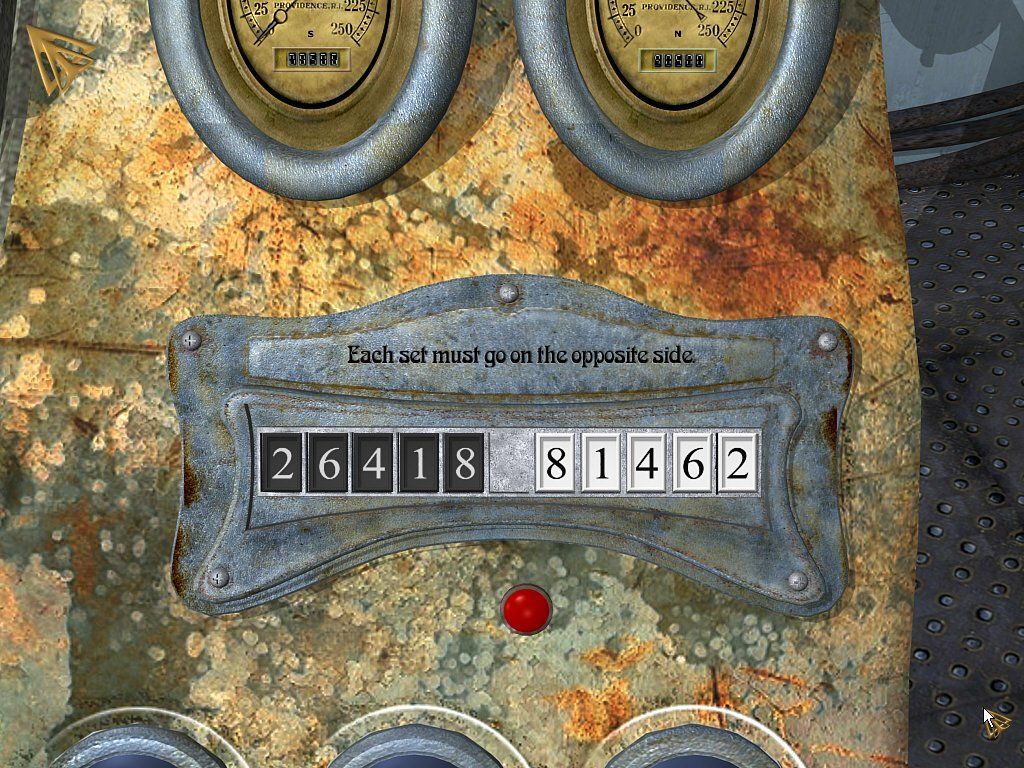Retro Replay Review
Gameplay
Journey to the Center of the Earth is a classic point-and-click adventure that invites players to explore a vast subterranean world. You guide Ariane by clicking on hotspots, interacting with objects, and engaging in dialogue that can alter the course of the narrative. The controls are intuitive, which makes it easy for newcomers to adventure games to jump in without a steep learning curve.
(HEY YOU!! We hope you enjoy! We try not to run ads. So basically, this is a very expensive hobby running this site. Please consider joining us for updates, forums, and more. Network w/ us to make some cash or friends while retro gaming, and you can win some free retro games for posting. Okay, carry on 👍)
One of the standouts of the gameplay is its puzzle design. With over a hundred puzzles scattered throughout the caverns, you’ll need to experiment, combine inventory items, and pay close attention to environmental clues. Some puzzles are straightforward inventory challenges, while others require logical deduction, pattern recognition, or careful timing. These varied challenges keep the experience fresh and reward thoughtful exploration.
The branching paths and dual endings offer significant replay value. Depending on choices Ariane makes—whether in dialogue options or puzzle solutions—you can unlock two distinct conclusions. This design encourages multiple playthroughs, as discovering the alternate ending sheds new light on earlier plot points and character motivations.
However, the pacing occasionally lags during longer dialogue sequences, and a few puzzles may leave players scratching their heads without clear context. Fortunately, the game’s hint system can be engaged to nudge you forward, preventing frustration. Overall, the gameplay strikes a satisfying balance between challenge and accessibility, making it well-suited to fans of narrative-driven adventures.
Graphics
Visually, Journey to the Center of the Earth boasts richly detailed 2D backgrounds that capture the beauty and mystery of an underground realm. From crystalline caverns to bioluminescent forests and lava-lit chambers, each area feels distinct and carefully crafted. The color palette leans heavily on earth tones punctuated by vibrant flora and fauna, creating an immersive sense of place.
Character sprites and animations are smooth, and Ariane’s expressive reactions add personality to every situation. Non-player characters and exotic creatures that you encounter range from foreboding to whimsical, and their design reinforces the feeling that this world has existed, hidden, for centuries. Minor animation touches—like flickering torchlight or dripping water—heighten the atmosphere without overwhelming the scene.
The game also incorporates subtle parallax scrolling, giving backgrounds a sense of depth when Ariane moves from one side of the screen to the other. These visual flourishes, while not groundbreaking by modern standards, showcase thoughtful attention to detail and contribute to a living, breathing subterranean environment.
On the technical side, the interface is clean and unobtrusive. Inventory icons are well-designed and easy to identify, and cursor changes clearly communicate available interactions. Even on higher-resolution displays, the art holds up nicely, avoiding the pixelation issues that sometimes plague older adventure titles. Overall, the graphics do an excellent job of transporting players into the heart of the earth.
Story
The narrative of Journey to the Center of the Earth draws inspiration from Jules Verne’s visionary science fiction, but it carves out its own path. You play as Ariane, a photojournalist whose curiosity and quick thinking propel her into an extraordinary odyssey beneath an Icelandic volcano. This fresh protagonist brings modern sensibilities to Verne’s classic premise, grounding the fantastic setting with real human stakes.
As Ariane delves deeper, she encounters enigmatic civilizations, intelligent creatures, and relics of lost epochs. Conversations with these beings reveal snippets of lore, weaving a tapestry of history and myth that unfolds gradually. The writing is engaging, with enough twists and moral dilemmas to keep you invested; your choices in dialogue can shape relationships and influence the game’s outcome.
The dual endings are a highlight of the story structure. Without spoiling specifics, the first conclusion offers a hopeful resolution that hints at future adventures, while the second ending provides a darker, more introspective commentary on exploration and consequence. Discovering both endings feels rewarding and adds a layer of narrative complexity rarely seen in games of this era.
While the pacing is generally strong, a few sections rely heavily on exposition, which may slow momentum for players eager to solve puzzles. Even so, the voice acting and text work together to maintain immersion, and key story beats are often accompanied by evocative music and sound effects that heighten emotional impact. In the end, the story delivers a memorable journey true to the spirit of exploration.
Overall Experience
Journey to the Center of the Earth offers a compelling blend of exploration, puzzle-solving, and narrative depth. The point-and-click mechanics are approachable yet satisfying, and the variety of challenges ensures that the gameplay never feels repetitive. Whether you’re carefully examining a cavern wall or negotiating with a mysterious subterranean tribe, there’s always something new to discover.
The art direction and sound design work in harmony to create a vivid underground world. From the subtle echo of dripping water to the vibrant glow of alien flora, the atmosphere is consistently engaging. Even though the game’s visuals aren’t as cutting-edge as modern 3D titles, its handcrafted 2D art possesses a timeless charm that continues to captivate.
With its two distinct endings, Journey to the Center of the Earth encourages multiple playthroughs, and its branching dialogue adds layers of replayability. The narrative invites you to ponder the costs and rewards of discovery, making each choice feel meaningful. While minor pacing hiccups emerge in exposition-heavy scenes, they’re easily forgiven in light of the overall quality and ambition of the project.
For fans of classic adventure games, or anyone intrigued by Jules Verne’s legacy, this title stands out as a heartfelt homage and an entertaining standalone experience. Journey to the Center of the Earth delivers on the promise of an epic subterranean odyssey—one that you’ll want to embark upon again and again.
 Retro Replay Retro Replay gaming reviews, news, emulation, geek stuff and more!
Retro Replay Retro Replay gaming reviews, news, emulation, geek stuff and more!









Reviews
There are no reviews yet.